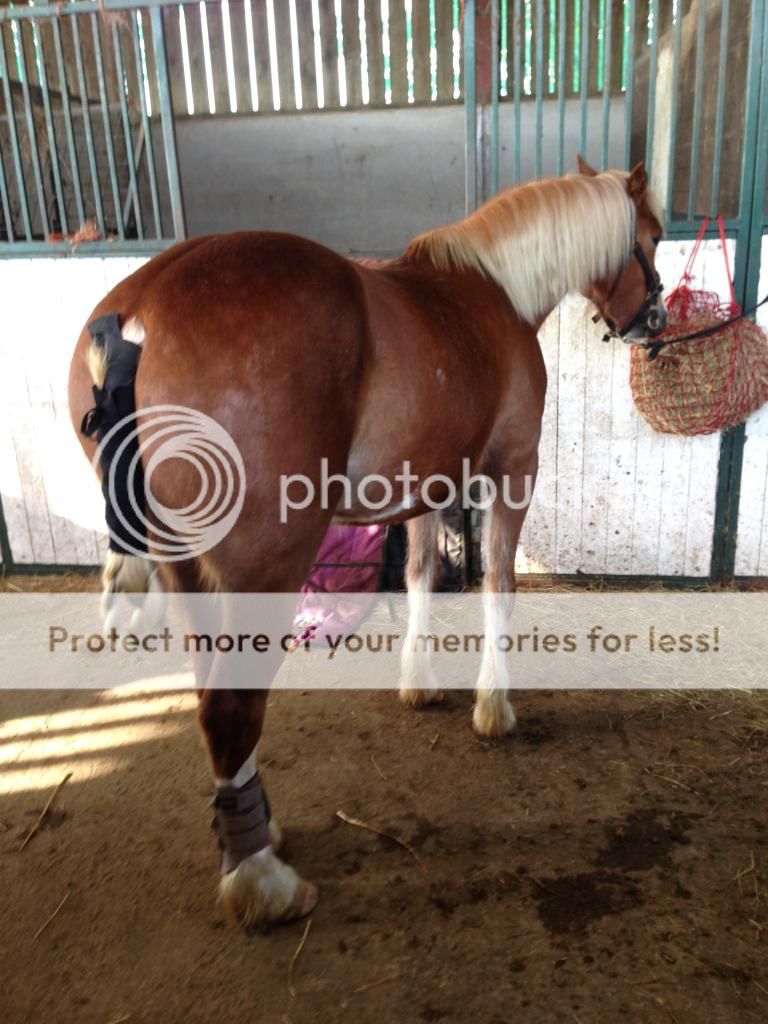You are using an out of date browser. It may not display this or other websites correctly.
You should upgrade or use an alternative browser.
You should upgrade or use an alternative browser.
Deciding when to back and pressure.
- Thread starter Slave2Magic
- Start date
blitznbobs
Well-Known Member
well as long as she goes in the trailer - I'll be happy!
windand rain
Well-Known Member
Girl racer although he is a big lad and carrying a lot of condition he is no where near mature enough to back he still bum high the length of rein hasnt come and he is very upright so give him more time until he evens up and his neck stretches forward rather than up
Fides
Well-Known Member
So when do you think I should back this girly then

she's 3 tomorrow, a holsteiner and standing about 16.2 now... broad in the chest already (but if her parents are anything to go by will be broader) and as you can see still slightly bum high...?
Blitz
Still not any real depth in the chest - I too would suspect a few more inches growth yet, especially as she is only 3. If she were mine, I would probably back at the end off the summer and turn away over winter.
This is my boy last year at the end of the summer at 4. He has less depth to the chest compared to the last photo which is this year coming out of winter. But then compare him to my mare who is a year older - she is much more mature.
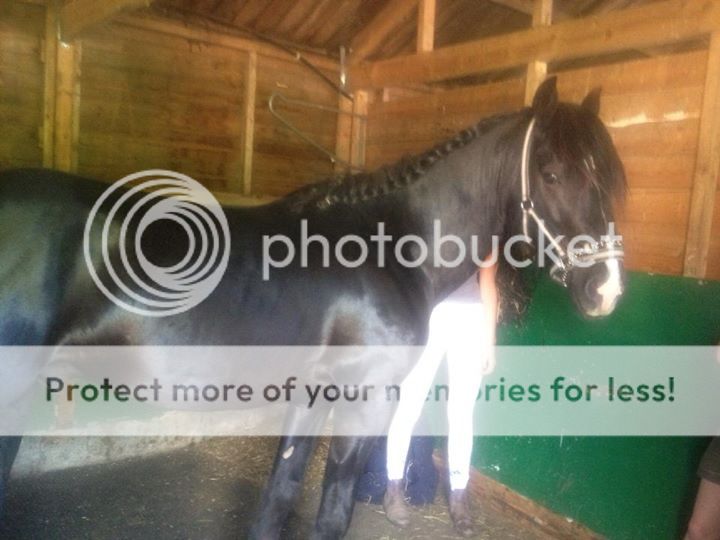
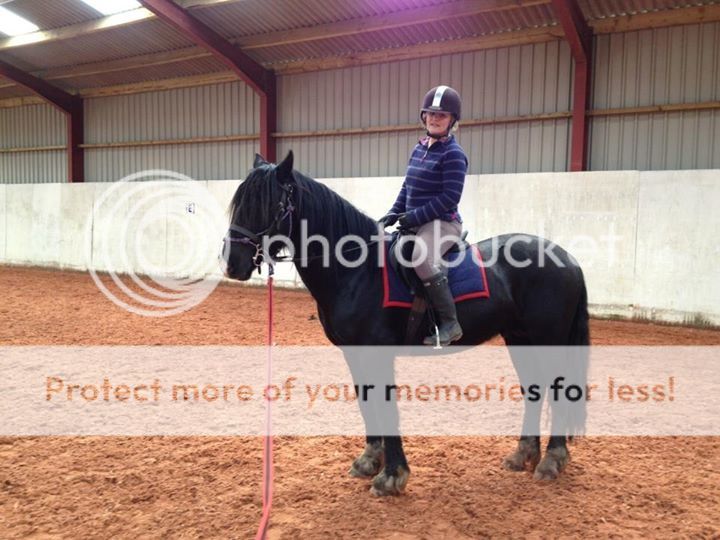
Now

I'd say incredibly bum high so a 'not' from me.
Deseado
Well-Known Member
Being bum high is no barrier to starting light work, neither is being narrow in the chest - both these things are normal in the young horse, as are weak quarters, low withers (AKA bum high), sickle hocks, etc. Surely it is the weaker horse that would benefit most from some light work? What better way to strengthen muscles, bones and tendons than to condition them? When I worked in Germany breaking youngsters (they were all 3 year olds, of varying maturity), one of the aims was to strengthen, especially the withers and back, so that the horses were ready to carry the rider for later more serious work. To me the majority of horses pictured here would greatly benefit from some light work, not sitting in a field stuffing themselves, or "playing" with their owners.
blitznbobs
Well-Known Member
My girl (pictured above) has begun work and has been in the school learning the voice commands (whoa, walk, trot, over, stand etc) as well as the usual manners things (ie when we get cross we don't stand up on our back legs  ) and when she has got this she'll be long reined thru the summer - She will be backed the back end of the summer - if all goes well and hacked over the winter to start schooling for the 4 year old classes next year... that's if everything goes to plan - but I've been in the horse world long enough to know that, that, very rarely happens!
) and when she has got this she'll be long reined thru the summer - She will be backed the back end of the summer - if all goes well and hacked over the winter to start schooling for the 4 year old classes next year... that's if everything goes to plan - but I've been in the horse world long enough to know that, that, very rarely happens!
Blitz
Blitz
MotherOfChickens
MotherDucker
I would like to know how a horse can be 'desperate' to do something and go places? Is that not just the owners desperation to do those things, or how would you know?
do you not find that some horses just love being out and about-or do you mean competing? or is that just the breeds I choose that love seeing a different view? all of mine seem to really enjoy the change of scenery that goes with hacking-just as well because thats what I do. After a horrid winter of my ponies not doing very much, they seem to like going out and about now.
Fides
Well-Known Member
Being bum high is no barrier to starting light work, neither is being narrow in the chest - both these things are normal in the young horse, as are weak quarters, low withers (AKA bum high), sickle hocks, etc. Surely it is the weaker horse that would benefit most from some light work? What better way to strengthen muscles, bones and tendons than to condition them? When I worked in Germany breaking youngsters (they were all 3 year olds, of varying maturity), one of the aims was to strengthen, especially the withers and back, so that the horses were ready to carry the rider for later more serious work. To me the majority of horses pictured here would greatly benefit from some light work, not sitting in a field stuffing themselves, or "playing" with their owners.
With respect I disagree. Mine were backed 'late' but they never played or stood in the field stuffing themselves, they were worked 3-4 times a week, occasionally 5 or 6 if the weather was good (Pah when does THAT happen in England), they had all the foundations for ridden work established from the ground before adding a rider. We worked in the arena with long lines, we hacked in hand, with long lines and also ponyed from an older horse. When I backed my mare at 4 she already knew wtc, rein back (a few steps only) turn on the forhand and haunches, the correct canter lead, she had been desensitised to all sorts out 'hacking', she knew how to position herself to open a gate without having to dismount. To her it probably was 'playing' as there was little pressure as I wanted her to enjoy her job. The result was that I had a 5 year old who was well rounded enough to teach a 5 and 7 year old to ride.
Wagtail
Horse servant
He's gorgeous, and looks strong but too bum high to back IMO. I can't see how the saddle would sit comfortably on his back and would be tipped forwards. So I would wait until he levels out first.
amandap
Well-Known Member
Must "work" be ridden to be considered work? Is there a difference between work and a planned exerize regime and if so what is the difference?
Wagtail
Horse servant
Being bum high is no barrier to starting light work, neither is being narrow in the chest - both these things are normal in the young horse, as are weak quarters, low withers (AKA bum high), sickle hocks, etc.
Sickle hocks are not normal for youngsters, they are a conformation fault that will stay throughout their lives.
Tiddlypom
Carries on creakily
I'm going to stick to the traditional English system with my just-turned-3-yo homebred sports horse filly. She'll be long lined for several weeks and then sat on in the autumn. I will then turn her away for the winter and get her started properly as a 4yo.
She looks quite immature at the mo, but mentally she is ready to start doing something. She's just started to wear a roller for a couple of hours a day in her stable, as a beginning to it all, and she has recently been seen by the EDT, so I will be bitting her shortly.
I was first pressured to 'do something with her' last year, by my ex farrier. He opined that her neck needed building up, so advised that I put a roller, side reins and a mouthing bit on her and leave her in the stable for several hours a day :eek3:. I did not follow this advice.....
She looks quite immature at the mo, but mentally she is ready to start doing something. She's just started to wear a roller for a couple of hours a day in her stable, as a beginning to it all, and she has recently been seen by the EDT, so I will be bitting her shortly.
I was first pressured to 'do something with her' last year, by my ex farrier. He opined that her neck needed building up, so advised that I put a roller, side reins and a mouthing bit on her and leave her in the stable for several hours a day :eek3:. I did not follow this advice.....
Deseado
Well-Known Member
Must "work" be ridden to be considered work? Is there a difference between work and a planned exerize regime and if so what is the difference?
No, work can be anything that makes the horse, well, work - like lunging, etc. And there is physical work and mental work; most of the early work a young horse does will be mental, with physical work increasing as the horse is capable. But I think that leading horses about like dogs on leads is of limited use, as is longlining actually - after the first half hour there is not much else to teach, especially if it's all at a walk.
amandap
Well-Known Member
I like the sound of this I must say.With respect I disagree. Mine were backed 'late' but they never played or stood in the field stuffing themselves, they were worked 3-4 times a week, occasionally 5 or 6 if the weather was good (Pah when does THAT happen in England), they had all the foundations for ridden work established from the ground before adding a rider. We worked in the arena with long lines, we hacked in hand, with long lines and also ponyed from an older horse. When I backed my mare at 4 she already knew wtc, rein back (a few steps only) turn on the forhand and haunches, the correct canter lead, she had been desensitised to all sorts out 'hacking', she knew how to position herself to open a gate without having to dismount. To her it probably was 'playing' as there was little pressure as I wanted her to enjoy her job. The result was that I had a 5 year old who was well rounded enough to teach a 5 and 7 year old to ride.
Deseado
Well-Known Member
I now begin to understand why there are so many "green" 6-7-8 year olds, and problem horses...............
blitznbobs
Well-Known Member
No, work can be anything that makes the horse, well, work - like lunging, etc. And there is physical work and mental work; most of the early work a young horse does will be mental, with physical work increasing as the horse is capable. But I think that leading horses about like dogs on leads is of limited use, as is longlining actually - after the first half hour there is not much else to teach, especially if it's all at a walk.
Umm My horses don't just walk on the long lines - trot and canter are also there... they learn all the moves on the lines too it's great for passage and piaffe too... anyone who says long lines are of limited use has never been taught to long line correctly - they can solve so many problems from the floor and give you another tool in your chest for when there is an issue on board...
Fides
Well-Known Member
. But I think that leading horses about like dogs on leads is of limited use, as is longlining actually - after the first half hour there is not much else to teach, especially if it's all at a walk.
If you read my post above you will see why I will disagree with this. Due to longlining, when I got on my mare she already 'knew' what every applied aid meant due to teaching it from the ground. Weight aids came later.
I now begin to understand why there are so many "green" 6-7-8 year olds, and problem horses...............
I have opposing views to you and my mare is far from green. She copes better with everything I have put at her than most 'mature' horses I have ridden.
Umm My horses don't just walk on the long lines - trot and canter are also there... they learn all the moves on the lines too it's great for passage and piaffe too... anyone who says long lines are of limited use has never been taught to long line correctly - they can solve so many problems from the floor and give you another tool in your chest for when there is an issue on board...
Agreed
Meowy Catkin
Meow!
I now begin to understand why there are so many "green" 6-7-8 year olds, and problem horses..............
Backing at a later age doesn't automatically create a problem horse. I've helped back ex broodies who were in their teens and they all went sweetly. One of mine was sat on at four and then not properly backed and ridden away until she was eight. She's able to be ridden by disabled riders so not exactly a problem horse.
Tiddlypom
Carries on creakily
Tssk. You wouldn't be trying to be provocative, would youI now begin to understand why there are so many "green" 6-7-8 year olds, and problem horses...............
And sickle hocks are not a normal developmental phase, and if you can teach a horse everything that you know about long lining in half an hour, then that says a lot about the extent of your long lining skills...
Meowy Catkin
Meow!
Sickle hocks are not normal for youngsters, they are a conformation fault that will stay throughout their lives.
True.
amandap
Well-Known Member
There have always been knackered horses though. The mists of time erase them from memory though. An old horseman near my sister starts his by stabling 24/7 feeding up and then rides and long lines (short) out in draw reins (curb and bit)and hunts them asap at 2 or rising 2. One reared and fell back over onto him breaking his leg on the road. They don't look one bit happy in their work to me but I expect they have seen a lot!
I think horses are green beause they are sold that way without the work put in! A horse can still be green at 20 if it never leaves the yard or school! Another can be green at a ripe old age if it is never taught aids properly!
I think horses are green beause they are sold that way without the work put in! A horse can still be green at 20 if it never leaves the yard or school! Another can be green at a ripe old age if it is never taught aids properly!
Deseado
Well-Known Member
Longlining is a great teaching tool, but not one that i would tend to use with very young horses - I prefer to use all the aids from the beginning, not just the mouth. Too many people longline without understanding what they are trying to do, and very many horses are longlined for miles, but still don't go to the rider's hand. I am glad your horse is not green; but there are very many that never progress because their riders are afraid of "doing too much" (or perhaps don't know how to do much, really), and all this "turning away to mature" stuff just means that they are going over old ground over and over again. Far better, in my experience, to start with a well-grown youngster, progress steadily and have a plan that gets, and keeps, the horse progressing physically and mentally.
Deseado
Well-Known Member
Tssk. You wouldn't be trying to be provocative, would you?
And sickle hocks are not a normal developmental phase, and if you can teach a horse everything that you know about long lining in half an hour, then that says a lot about the extent of your long lining skills...
No, I'm not trying to provoke. I'm trying to understand why there are so many horses which never progress, which don't get even a basic education, which their riders seem to be terrified of (often with good reason, but not always the horse's fault).
Many young horses have what look like sickle hocks because their thigh muscles are weak, as the muscle develops the hind legs straighten. True sickle hocks are of course an angulation fault.
I wouldn't want to teach a young horse very much on long lines, I think you do a better job up on top where you can use all the aids together. These days I don't long line breakers at all, but the advanced horses do work on the lines sometimes. I learned to long line in Portugal, but not like you do it over here.
Fides
Well-Known Member
Backing at a later age doesn't automatically create a problem horse. I've helped back ex broodies who were in their teens and they all went sweetly. One of mine was sat on at four and then not properly backed and ridden away until she was eight. She's able to be ridden by disabled riders so not exactly a problem horse.
I found that with the rescue TB I backed last summer. She was a dream to back even though she had been used as a broodmare until 9 and I backed her at 10. She was however a reader but this was an established vice long before the backing. It may have been a pain issue but the owner wouldn't/couldn't investigate.
I learned to long line in Portugal, but not like you do it over here.
I learned the Portuguese way too and it is a beautiful way.
When I long line I sometimes do it through heavy stirrups to teach 'leg aids', so when backed, they have the full repertoire of basic aids, minus the weight. I also do it without going through stirrups or side rings on a roller, to teach the horse the direct and indirect rein - not necessarily with any weight on the mouth.
Incidentally both of my horses can be long lined and ridden bit less due to how I have done the foundation work. Before introducing the bit I long line off a head collar (side pull) or rope halter (bosal style bit less)
This is her being ridden in the field she normally plays out in
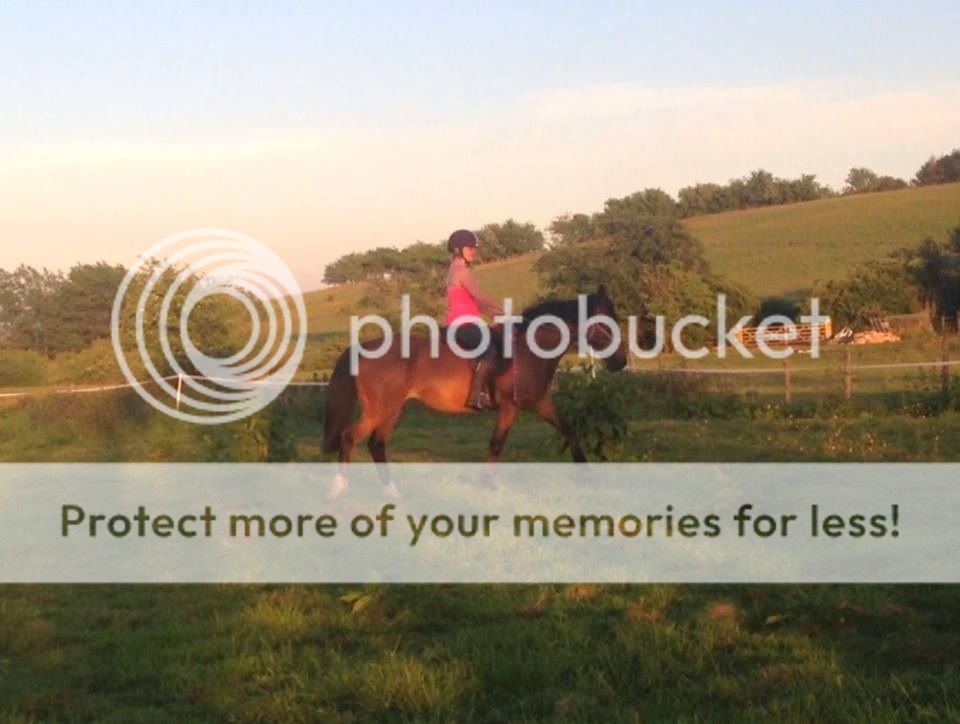
Last edited:
windand rain
Well-Known Member
deseado I do understand your point to a level but not at three. I am happy for my rising 5 year olds to go on to walk trot canter gallop and jump with a rider within weeks what I hate to see and regularly do see is babies who are ruined before they are even a yearling. Foals being lunged in a pessoa, yearlings being tacked up the prospect of them being sat on at 18 months old because they are going to big horses. I will repeat what I have said over and over again if you dont have the patience to wait for your horse to grow up, sell it or dont buy it in the first place and get something ready to do the job you want. Why in this day of scientific proof , educated research and what would now seem to be common sense would you deliberately set out in the name of convenience to ruin a young horse. I would have thought but it seems I am wrong that the majority of breeders would want what is best for their youngsters to see them well bred, well matured and well handled so they can baring accidents/ disease have a long and healthy life. I know I do.
I also see the point in older green horses being described as a problem but that is because they dont make progression quickly enough spending two years after backing getting a horse to trot in a straightish line is not and not progress through the paces for years is obviously a different aspect of horse training. Y youngster was backed three weeks later did a ridden show and came second She then went to her first cross country a couple of months later so no they dont get left stuffing their faces
The surprised post about the 4 year old is typical, all the youngsters backed at that age that I have come across have been just the same have happily settled into ridden work without even batting an eye at the prospect you would think they had been doing it all their lives
I also see the point in older green horses being described as a problem but that is because they dont make progression quickly enough spending two years after backing getting a horse to trot in a straightish line is not and not progress through the paces for years is obviously a different aspect of horse training. Y youngster was backed three weeks later did a ridden show and came second She then went to her first cross country a couple of months later so no they dont get left stuffing their faces
The surprised post about the 4 year old is typical, all the youngsters backed at that age that I have come across have been just the same have happily settled into ridden work without even batting an eye at the prospect you would think they had been doing it all their lives
Last edited:
Tobiano
Well-Known Member
At the risk of being controversial, I'd suggest that lungeing young horses excessively is at least as damaging as backing them early. A lot of unnatural pressure on joints.
windand rain
Well-Known Member
Absolutely tobiano I don't lunge breakers either
Spring Feather
Well-Known Member
At the risk of being controversial, I'd suggest that lungeing young horses excessively is at least as damaging as backing them early. A lot of unnatural pressure on joints.
Absolutely, I agree with you, that's why I don't lunge my youngsters.
TarrSteps
Well-Known Member
This is true, bone, muscle and sinew does respond to the stresses placed on it. Someone came on here once that had something to do with research into this area (sorry i can't find it) but they were saying that in-hand work or ponying from another horse would also have the positive physical effect. If you wanted a dressage horse, you should start from a young age (again in-hand) to teach it lateral work as this is a specific thing that they will need to do. If you want a racehorse to run on turf, turn it out on a field so it can run and move on that surface.
I found that quite interesting as at the time I'd just bought my gelding. He'd come from a very flat area and I put him out on the hillside here and he really found it hard work. Soon he adjusted to the terrain and is now very nimble and agile on steep inclines. As he will be ridden around terrain like that, I'm certain that his years of getting used to it in the field will stand him in good stead to physically cope with it under saddle.
ETA - I'd be very interested to hear people's opinions on whether they think that this horse is ready for backing or not, based on this photo (sorry he's standing on a slope). The photo was taken this Easter and he'd just turned four.
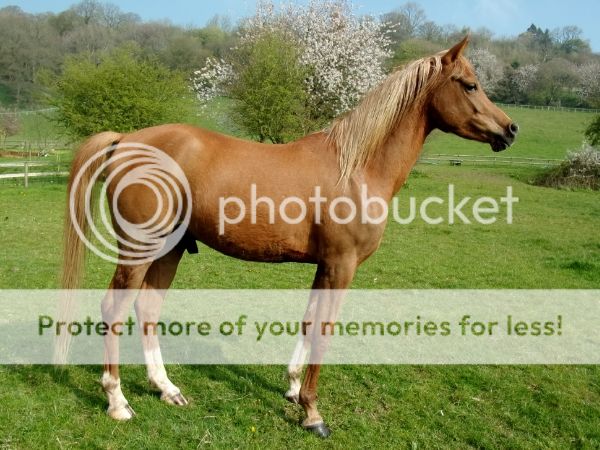
There is no question in my mind. Most of my experience is with horses for sport and I would agree horses brought up on varied terrain fair better than ones kept on postage stamps. I do a fair amount of work with horses that don't hack well and in many cases it's pretty clear a major source of stress is the horse's inability to 'think with its feet'. People who use horses in rough country often say it's essential the horse grows up on it.
I don't think you can judge from photos and I also think it's very difficult to gauge for breeds you're not familiar with. I usually start and let the horse tell me.
I'm also from a culture where it's common to start horses a bit earlier, although I would also say the gap between backing and, say, competing is a bit longer. There aren't any definitive studies but I would agree with SF and Cortez, my experience and observation suggests horses here do not last longer or stay sounder.
That said, I think there are so many variables age is a relatively small one.
amandap
Well-Known Member
Perhaps moving on to a higher level too fast is a negative factor then and as always, the 'how' it's all done is a huge factor.

